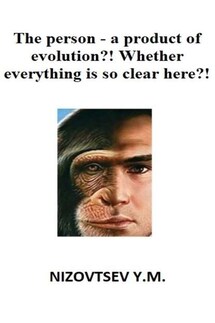Everything and nothingness - страница 5
If mentally to exclude consciousness, "having left" beingness as a repository of things alone in the residue, it becomes as a non-existence. What's the difference, there is something there or not? All the same anybody isn't present there. If, on the contrary, to exclude things, having left consciousness in loneliness, it at once loses life – there are no things, time, space, motion, – there are no and the existence as such, so as consciousness loses a support and at the same time – resistance of something, and without a thing it isn't present a subject neither for sensations, nor for speculations, nor for actions. In other words, beingness doesn't exist out of consciousness, and consciousness is incapable to exist without things, what means the indissolubility of beingness and consciousness in the basis, i.e. – their unity. Means, in the basis – out of time, or in infinity, they make organic whole, and they can be designated as Uniform. It is necessary only to learn a method of their "output" from eternal and infinite Uniform, i.e. to try to come nearer to the truth which is secret of Creation.
But it is already clear that consciousness in beingness, which is the derivative from projection of Uniform, is certain changes of the passive by consciousness; Uniform is steady, containing in itself everything, to which consciousness can address for maintenance of functioning of the projection; from this it follows that one is connected with another.
Heidegger tried to understand it in application to the person. He declared the following: "… Dasein itself has a "Being-in-space" of its own$ but this in turn is possible only on the basis of Being-in-the-world in general" [4, p. 82].
Heidegger could also represent that without motion, more precisely, in our interpretation – without the conversion of process of updating of copies of things in holographic projection in motion in human consciousness, – the world would remain hidden for the person: "If being-in-a world is a basic state of Dasein, and one which Dasein operates not only in general but pre-eminently in the mode of everydayness, then it must also be something which has always been experienced ontically. It would be unintelligible for Being-in-the-world to remain totally veiled from view especially since Dasein has at its disposal an understanding of its own Being, no matter how indefinitely this understanding may function. But no sooner was the “phenomenon of knowing the world” grasped than it got interpreted in a “superficial” formal manner. The evidence for this is the procedure (still customary today) of setting up knowing as a “relation between subject and Object” – a procedure in which there lurks as much “truth” as vacuity. But subject and Object do not coincide with Dasein in the world.” [4, p. 86-87].
Without the internal, i.e. without consciousness in the person, beingness for the person, as cognition, is absent – about this Heidegger also ponders: “If one reflects upon this relationship of Being, an entity called “Nature” is given proximally as that which becomes known. Knowing, as such, is not to be met in this entity. If knowing “is” at all, it belongs solely to those entities which know. But in those entities, human-Things knowing is not present-at-hand. In any case, it is not externally ascertainable as, let us say, bodily properties are. Now in as-much as knowing belongs to these entities and is not some external characteristic, it must be “inside”” [4, p. 87].









